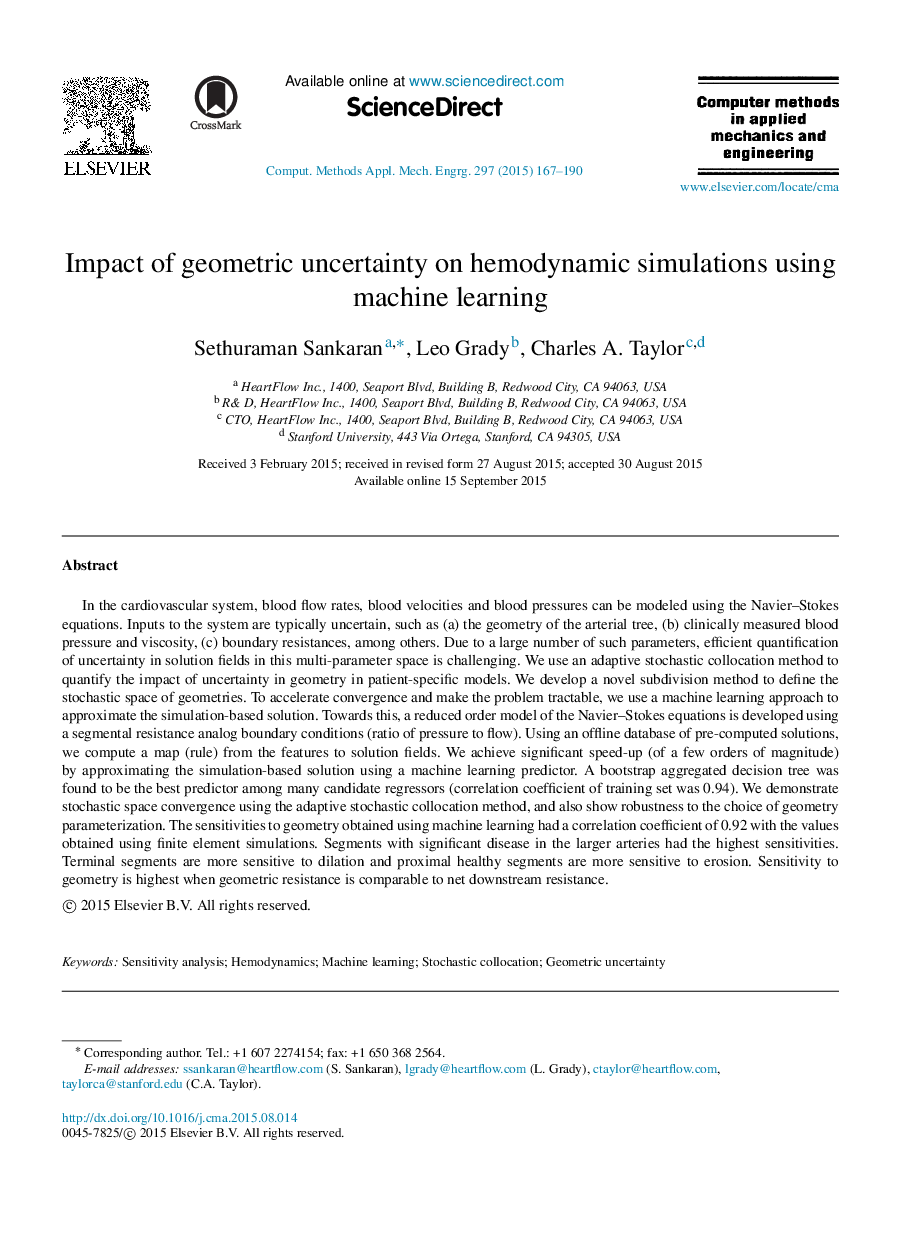| Article ID | Journal | Published Year | Pages | File Type |
|---|---|---|---|---|
| 497883 | Computer Methods in Applied Mechanics and Engineering | 2015 | 24 Pages |
In the cardiovascular system, blood flow rates, blood velocities and blood pressures can be modeled using the Navier–Stokes equations. Inputs to the system are typically uncertain, such as (a) the geometry of the arterial tree, (b) clinically measured blood pressure and viscosity, (c) boundary resistances, among others. Due to a large number of such parameters, efficient quantification of uncertainty in solution fields in this multi-parameter space is challenging. We use an adaptive stochastic collocation method to quantify the impact of uncertainty in geometry in patient-specific models. We develop a novel subdivision method to define the stochastic space of geometries. To accelerate convergence and make the problem tractable, we use a machine learning approach to approximate the simulation-based solution. Towards this, a reduced order model of the Navier–Stokes equations is developed using a segmental resistance analog boundary conditions (ratio of pressure to flow). Using an offline database of pre-computed solutions, we compute a map (rule) from the features to solution fields. We achieve significant speed-up (of a few orders of magnitude) by approximating the simulation-based solution using a machine learning predictor. A bootstrap aggregated decision tree was found to be the best predictor among many candidate regressors (correlation coefficient of training set was 0.94). We demonstrate stochastic space convergence using the adaptive stochastic collocation method, and also show robustness to the choice of geometry parameterization. The sensitivities to geometry obtained using machine learning had a correlation coefficient of 0.92 with the values obtained using finite element simulations. Segments with significant disease in the larger arteries had the highest sensitivities. Terminal segments are more sensitive to dilation and proximal healthy segments are more sensitive to erosion. Sensitivity to geometry is highest when geometric resistance is comparable to net downstream resistance.
